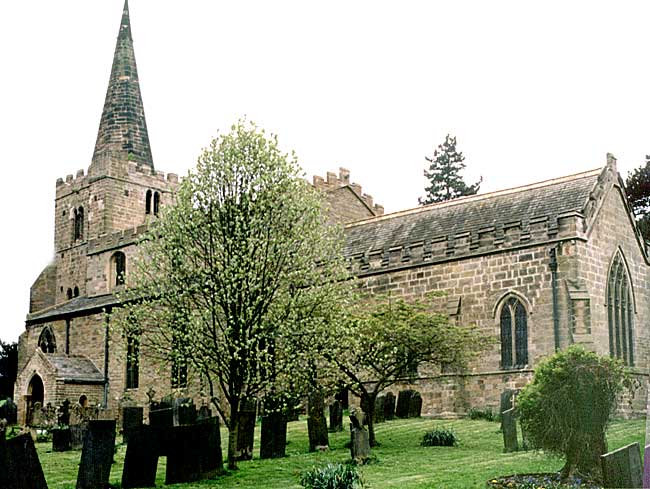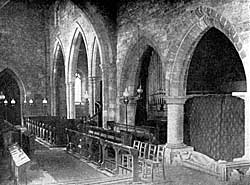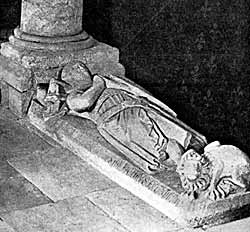The Summer Excursion.
THE Oxton district was chosen for the Society's Summer Excursion in 1908. The journey was made mainly by brake from Nottingham; some few members from Newark and from the south side of the Trent, joining the brakes at Lowdham. The day, Tuesday, June 16th, was not one of the finest, and covered brakes proved a great boon and added much to the shelter and comfort of members. Amongst those present were the Mayor of Nottingham (Councillor J. T. Spalding), the Hon. Frederick Strutt, the Revs. Atwell M. Y. Baylay, T. F. Collins, A. Du Boulay Hill, and W. Laycock, Messrs. T. M. Blagg, J. Bell, G. G. Bonser, W. Bradshaw, F. W. Dobson, G. F. Gascoyne, James Granger, W. R. Hamilton, J. H. Haywood, G. E. Hore, S. W. Johnson, Dr. J. Mackie, F. A. Morgan, J. Page, Dr. Davies Pryce, Ald. R. Mellors, J. Selby, C. H. Torr, F. A. Wadsworth, and the Rev. J. Standish and Mr. George Fellows (Secretaries).
At St. Mary's Church, Lowdham, which was reached soon after 10 a.m., the Rev. Atwell M. Y. Baylay read the following paper.
Lowdham Church
by the Rev. A. M. Y. Baylay.

St Mary the Virgin, Lowdham (photo: A Nicholson, 2003).
The oldest part of this church as we now see it is certainly the tower, which appears to belong to the latter part of the 12th century. It would seem that, when first erected, it stood clear of the then existing church, which was probably of timber. The whole of the tower is of one date, but the spire is a later addition, probably of the 14th century, and it may be that its weight was the cause of the tower cracking,— to counteract which the large western buttresses were added in 1821, and more recent repairs have also been found necessary. Observe the boldly projecting base-course to the east, an indication of the tower having once been a detached building; the plain unchamfered tower arch, and the way in which the vise in the south-west corner is squinched off within the tower, an unusual feature.
Next in order of date would come the original stone chancel and its side-chapel, built probably very early in the 13th century. But this original chancel has totally disappeared, and nothing remains but the beautiful arcade of two bays, by which the side-chapel opened into it. The side-chapel has gone also, with the exception of its western wall, which, once external, now forms the east wall of the north aisle of the nave. The external base-course is still visible there, and the trace of the slope of the lean-to roof. When the nave subsequently came to have side aisles, an arch was opened through into the chapel. It will be seen that this arch is cut straight through the base-course. A modern vestry was erected on the site of the chapel about the year 1860, I believe. For a long time previous to that date the arcade had been walled-up.
To this original chancel, or to its side-chapel, belongs the fine recumbent effigy of Sir John de Lowdham. The inscription reads: SIR • ION • DE • LOVDHAM • GIT • ICI • DE • SA • ALME • DEVS • EYT • MERCI.

Interior of Lowdham church.
The chancel was rebuilt, very probably on a larger scale, in the 14th century. There is a plain square recess just east of the arcade above mentioned. Its position, so far from the east end, suggests that it may have belonged to an earlier, and shorter, chancel. The piece of grotesque stone carving placed in it has apparently formed part of a gargoyle. There remains the head of a plain piscina, but the water drain has been removed. Unfortunately, about fifteen years ago, the chancel was repaired and in great part re-built, and the original east window was then wantonly destroyed. It was similar in character to the east window at Gonalston, but somewhat larger. It was replaced by a new window copied from the east window of the south aisle of the nave,—how badly copied, a comparison of the detail will shew. The very unsatisfactory battlemented parapet of the chancel is of the same date. There is an arched low-side window in the most usual position, the south-west corner of the chancel. Its character confirms the view that these windows were simply made for the purpose of giving a better light to the priest as he sat in his stall, an object which this particular window no longer fulfils, owing to the heavy coloured and ugly modern stained glass with which it has been filled.
 Effigy, Lowdham church.
Effigy, Lowdham church.The fine incised monumental slab of a priest, once in the centre of the chancel floor, now in its south wall, deserves special notice. The chasuble is of ample size, and reaches down to the feet behind. The arrangement of the orphreys is peculiar, the so-called Y cross being repeated at the lower part of the front in an inverted position. There is no doubt that these orphreys merely concealed joinings in the material of the vestment. The apparel of the alb in front is set some distance up from the bottom hem ; this is unusual. The stole is somewhat short, and almost entirely concealed by the chasuble. The maniple is evidently thrown loosely over the left arm, and not fastened. A chalice and a missal appear on either side of the priest's head, as emblems of his calling. The date, to judge by the details of the tabernacle work, and the style of the remaining lettering at the foot of the slab, does not seem to be earlier than the beginning of the 15th century.
There are many stones in memory of the Broughtons, who for a long period inhabited the Hall at Lowdham, and a brass placed by Mr. Foljambe in memory of the family of De Lowdham, who were among his ancestors.
The rebuilding of the nave with side-aisles must have taken place before the end of the 13th century. The arcades are not surpassed in beauty and dignity by those of any village church in the county. The shafts are filleted, and the nail-head moulding occurs in one of the capitals. The bases are spread out so as to serve as make-shift seats for the weak and aged, before benches in the naves of churches had become usual. The font may be considered as of the same date. Note the varied foliage in the canopies, and the heads on which their angles rest.
The side-aisles preserve their original width, and that on the south its original outer wall and south door. On the eastern jamb of this door is a small but well-cut cross. The wooden door is dated, twice over, 1641, and the outer gates of the porch may be of the same date, but the porch itself has been rebuilt in modern times.
